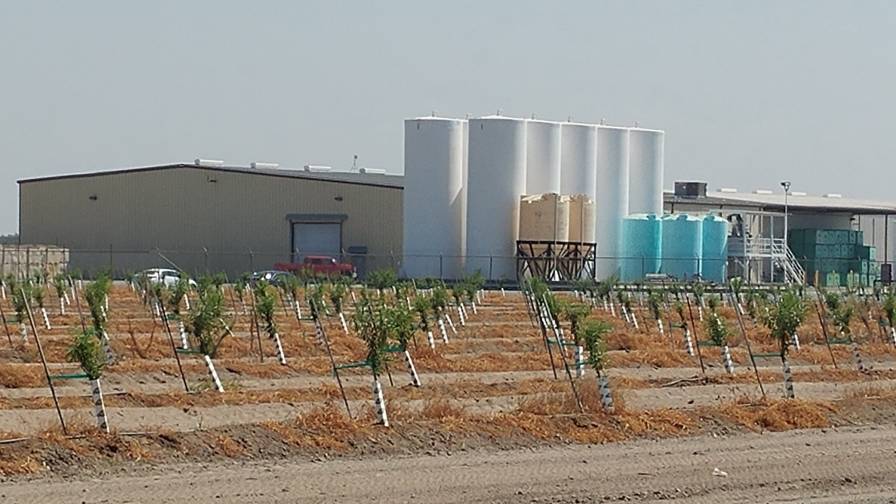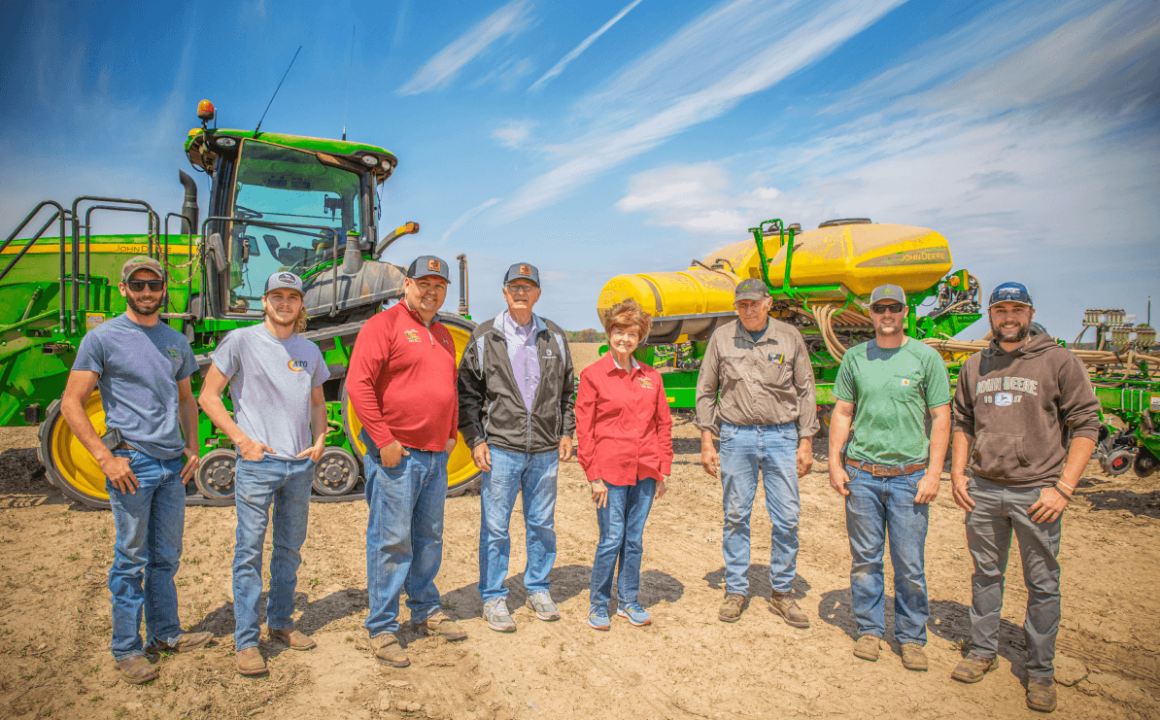Fertilizer Storage: An Inside Look at the Tank and Containment Systems Market

As more specialty fertilizer products come to market, dealers need to be certain they’re buying the style of tank that will store the correct products now, and in the future, says Enviropac.
For some in the tank and containment market, the past six months have been a rebound time. Among the signs: Attendees at the Midwest AG Industries Exposition (MAGIE) showed lots of interest in both fiberglass and stainless steel tanks, reports David Hemming, President of Precision Tank & Equipment (PT&E). One visitor even wanted to buy the 30,000-gallon the company was exhibiting on site.
Part of the uptick may be because growers are using more liquid fertilizer in the spring, a trend Hemming expects to continue, especially since those fertilizers can be a carrier for other valuable products.
PT&E also reports sales at its field-erected tank business — A&B Welding — are going very well. “It seems bigger companies are now letting loose of budget monies for new projects. We think we’ve turned a corner in that world too,” says Hemming. And about 80% of those tanks have a liner for containment inside.
At Heartland Tank Companies a breakthrough came in mid-summer, as 2017 had been a slow year for purchases of new API 650 storage tanks. “But all of a sudden we had a surge in July, when people were trying to see where pricing was going to go for fertilizer,” says Chris Brooks, National Sales Manager. “Plus, you’ve got several large companies that are expanding and putting in a number of greenfield projects, which has increased our activity.”
In general, he thinks because of the sheer amount of competition among retail firms, dealers are sensing they need to have enough inventory to properly serve their growers. Additionally, Brooks notes that transportation issues still loom, requiring dealers to find ways to store fertilizer through winter to have it on hand for the spring fertilizer season.
Tracking Trends
Interest in Nutristore tanks is growing because many smaller painted tanks are in need of repair — as are concrete secondaries, says Randy Cady, President of Cady Inc. This year the company has made some tank tweaks, and a more user-friendly, double-valved system has simplified installations.
“If a retailer prefers glass-coated steel floors for UAN tanks, Nutristore Glass Coated Steel Floor options allow for a membrane liner to be installed beneath the aggregate base,” he says. Here again, Nutristore tanks remove the future need of floor repainting and repair welding.
Cady says increasing environmental and anhydrous ammonia regulations are driving more of the nitrogen market to UAN, and he anticipates more retailers looking into Nutristore tanks.
Butch Kirk, President of International Tank Service (ITS), says half of his firm’s work is in tank restoration, especially in replacing floors — much of the time on structures ITS didn’t originally build.
ITS is feeling a pinch, though, in reduced inquiries and new projects. “When grain prices are depressed, that really affects the fertilizer business,” he’s found. On the positive side, the company recently completed a 5-million gallon tank in Michigan and is now working on a 3-million gallon double-walled tank in northwestern Ohio.
Enviropac Owner Dennis Neal has found there has been more interest in stainless tanks lately, but he notes they are still 30% to 40% more expensive than fiberglass tanks. “And fiberglass can store all the same products as stainless steel at a much lower investment cost,” he says.
One firm reported strong business in tank inspections. Heartland Tank Companies is doing 150 to 200 per year in the fertilizer industry alone. Brooks thinks it’s a good, positive sign that retailers are recognizing the fact that they need to follow many of TFI’s recommendations to maintain their tanks.
“Inspections reduce the owners’ potential liability as well as downtime in the future,” he says. “You catch problems that are occurring with your tank before they become major, saving you money in the long run.”
Another trend: Growers are beginning to add more on-farm liquid storage, says Enviropac’s Neal. A recent trigger was midsummer’s 28% drop in prices.
Todd Scobie, Sales Manager at Murray Equipment, is seeing an increase in demand for automation, including tank level monitoring and overfill protection. The company’s Radar Level Monitoring system sends data back to the cloud-based level monitoring software continuously.
Tank levels can also be visually monitored in real-time at each location from the home office to be compared to inventory in retail agronomy and/or back office software. “This is especially important when scheduling and reordering decisions are being made for multiple facilities from the home office,” Scobie points out.
By keeping a closer eye on tank inventory, retailers can ensure they can fulfill customer orders and offer improved deliveries,” he says. “They can also buy fertilizers and chemicals at better price points in anticipation of any shortages. Plus, the monitors provide security and increased safety.
Containment End
While a handful of states still require dike systems or double-walled tanks for containment, the majority additionally permit a more economical choice of internal tank liners. Heartland Tank Companies continue to serve this ever-expanding market, and Brooks notes that there’s been more of a push using internal liners for containment.
J.C. Ramsdell Enviro Services can report sales remain steady. The company works with both smaller operations and larger companies and offers options from complete turn-key designs to self-install packages. “This has allowed us to offer a wide variety of value and pricing to our customers,” says Kelley Ramsdell, Project Manager.
Industrywide, she believes sales on new fertilizer facilities are down, but many are continuing to build new containment systems as their business has grown — plus, Ramsdell has heard more customers forecasting future expansions.
This year, the industry saw a key containment supplier change hands. After decades in the business, Ken Hunter, Owner of Hunter Agri-Services, sold his company to veteran distributor Fertilizer Dealer Supply (FDS). The new firm is named Plia Containment Systems and is a great niche fit with FDS’s lines of products, says Dale Huffman, CFO.
“We try to emphasize that our geomembranes are a very economical alternative to concrete, which historically has been the go-to diking system,” he says. “These liners offer a reasonable-cost, adaptable alternative to satisfy the various state requirements.” The self-contained Plia-Dike can also be put up quickly.
Plia Containment has a new product in the works already. On view at MAGIE this summer was the company’s mini-bulk containment system. It’s designed for single mini-bulk — such as a nitrogen stabilizer — and it’s portable.
What to Watch For
CropLife® magazine asked system experts what advice they have for tank and containment buyers.
As more specialty fertilizer products are coming into the market, tank customers need to be certain they are buying the style of tank that will store the correct products now and in the future, says Enviropac’s Neal.
Heartland’s Brooks warns about the influx of foreign steel that doesn’t have mill certification. Some companies are trying to use materials that are $18 to $20 per hundredweight cheaper, but it’s inferior. These tanks may be cheaper on the front end, but they’ll corrode sooner and need to be repaired or replaced in five to 10 years.
Indeed, Neal has seen some companies offering stainless tanks that are extremely lightweight and are not built to UL142 standards. They weigh 25% less than UL142-designed tanks and do not provide the design and safety factor built into the heavier tanks, he says.
Cady offers Nutristore tanks made of American-made steel that meets or exceeds industry standards, with PE/SE design stamps to identify tank location manufacture.






